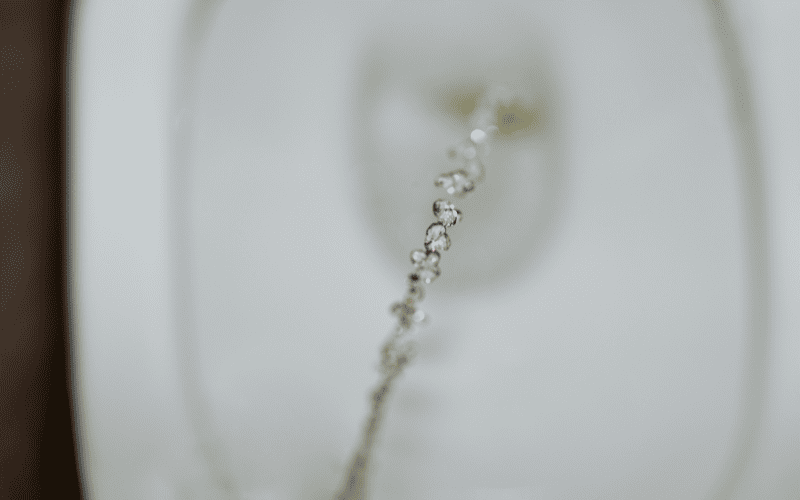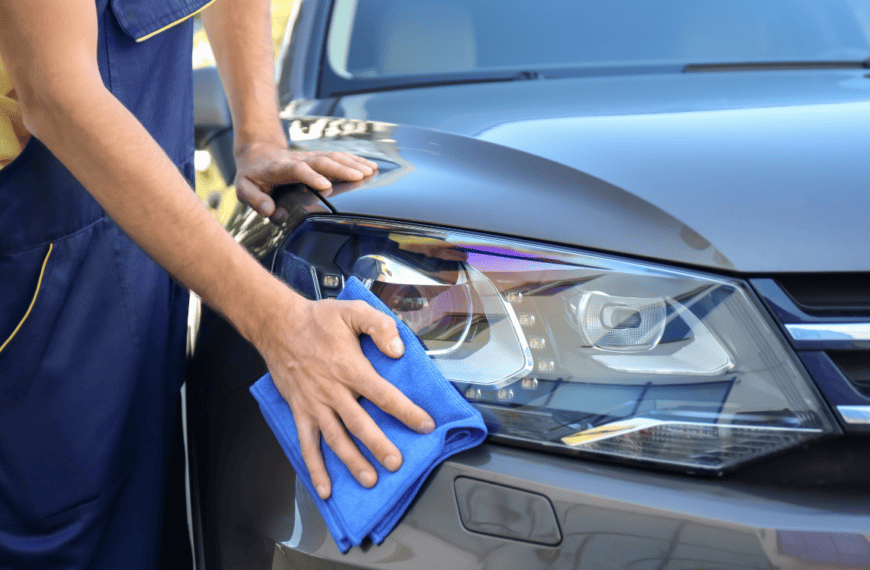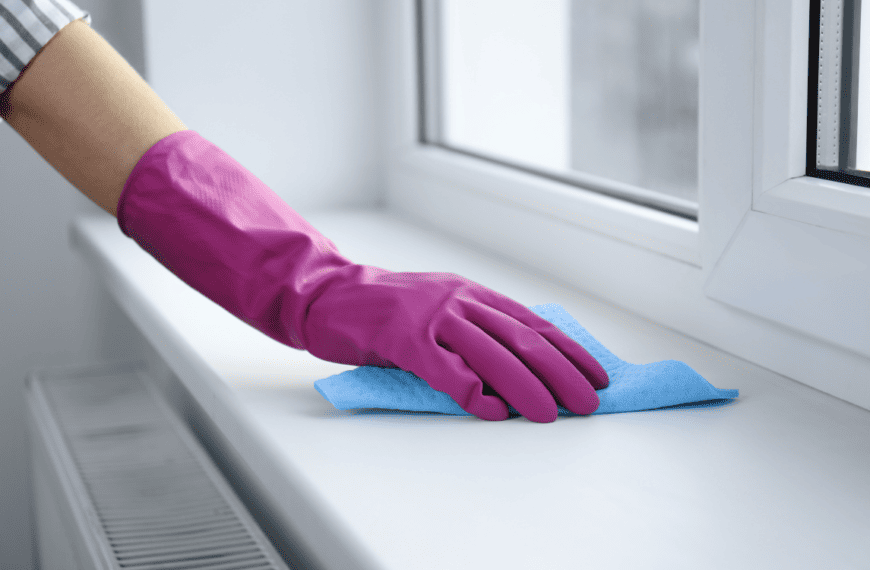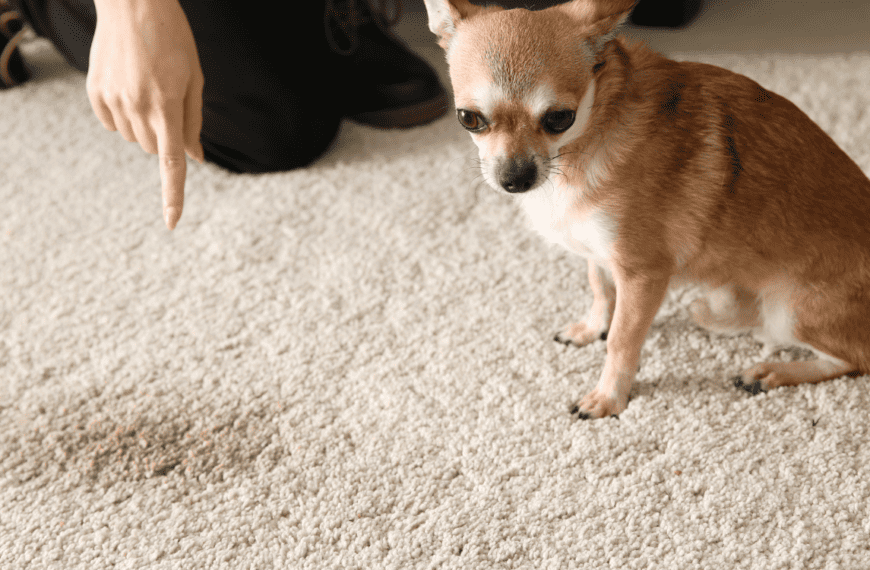I expected accidents when we started potty training the kids, but nothing could prepare me for the shocking ineptitude of a toddler around a toilet. Between my daughter’s random regression and the fact that we have a boy in the house, there have been enough times when pee has gone anywhere but the bowl.
And if a one-square-foot pee stain on the carpet is rough, the urine essence that can blanket a bathroom is horrific.
Urine odors can pop up for all kinds of reasons. But the smells and the solutions to them are all the same. I’ve gone through the potty training trials and tribulations, taking my cleaning efforts places I would have never expected. If a challenging stink has you scratching your head and holding your nose, I’ll show you everything I’ve learned about how to get urine smell out of bathroom.
Before You Begin: Tips for Better Results
- Stick with safe cleaners like enzyme formulas and hydrogen peroxide to tackle urine odors around the bathroom
- Follow the typical rules for cleaning the bathroom to eliminate urine smells. Work from the top of the room to the bottom, and remove small items, like the bathroom rug and trash can, to clean separately
- Urine odor sources can run deep. If you don’t feel comfortable or capable of completing some cleaning steps, you may want to call in a professional
How To Find Urine Smells in the Bathroom
A typical bathroom deep cleaning is often enough to remove general pee smells. But sometimes, you need a more focused approach.
Urine is resilient. If you don’t use the correct materials and methods, it can brush off even the most aggressive household cleaning products. You need to kill it at the source, using select cleaners to dissolve the smell-causing compounds and eliminate the urine odor permanently.
Finding that source is no easy feat. Urine can go anywhere in a bathroom, and staining is often more discreet here than on a carpet. Although the toilet is ground zero for pee smells, one study revealed urine droplets from splashback can fly as far as three feet in any direction!
Shining a UV blacklight can help narrow down the urine spots. But even old urine stains that aren’t contributing to the current bathroom smells can appear under a UV light. And in the bathroom, you know there will be plenty showing up.
So, what do you do when your bathroom smells like pee after cleaning? You grab sensible cleaners and do an intensive cleaning again, attacking the usual suspects this time and potentially going a bit deeper than before.
How To Remove a Pee Smell From the Bathroom
Urine can contaminate several areas around the room. Eliminating general pee smells typically becomes a deep cleaning job unless you pinpoint the source of that acrid odor.
Top Recommendation: Spray Enzyme Cleaner
When a urine odor fills the bathroom, an enzyme cleaner is a targeted solution to eliminate the source. Enzyme cleaners are safe to use on virtually any surface and do a better job than most harsh chemicals in churning through and removing pee stains. A few enzymatic cleaners to consider include:
- Urine-B-Gone Professional Urine Enzyme Odor Eliminator
- Calyptus All Purpose Concentrated Enzyme Cleaner
- Zeiff Pro-Grade Multi-Purpose Probiotic Enzyme Cleaner
Use enzyme cleaners to eliminate urine from the bathroom floor, toilet, walls, drains, bath mats, and anything else you think may harbor a urine smell. Each product differs slightly in terms of dwell time. Luckily, you can often let them sit and dry on the surface without worrying about lingering residue or lasting damage.
How To Use Enzyme Cleaners on a Urine Smell in the Bathroom
Sweep and pre-clean urine-stained bathroom surfaces (e.g., walls, toilet seat, tile floor) to remove debris and grime. Clearing away grunge will allow more enzyme cleaner to reach and degrade the stubborn urine underneath.
Spray the enzyme cleaner liberally on the bathroom surface. Agitate and work the cleaner into the surface as desired with a scrub brush or cloth.
Let the cleaner sit for the recommended dwell time (~5–30 minutes). If you want to mop the bathroom with an enzyme cleaner, spray the product directly on the floor or mix it with warm water in a mop bucket per the product directions.
For the most challenging spots, like urine soaked deep into unsealed grout, saturate the area with your enzyme cleaner. Let it sit for several hours or overnight to work through the stain.
Warning! Don’t use disinfectants immediately before or after using an enzyme cleaner. Disinfecting agents will destroy the active bacteria and enzymes that make enzymatic formulas work. If you wish to use them together, give each product sufficient dwell time before using the other.
Clean the Toilet Exceptionally Well
The toilet is often the primary source of any urine smell in the bathroom. My recommendation is that before you focus on other areas in the bathroom, make sure the toilet is thoroughly cleaned. Most of the time, just cleaning your toilet well can address the urine smell completely. At a minimum, a thorough cleaning of the toilet can significantly reduce any lingering odors, setting the stage for a fresher bathroom.
Tips for Cleaning Your Toilet
Porcelain won’t soak up urine, so you can usually remove difficult toilet smells simply by wiping it down with soap and water. Use a toilet bowl cleaner, like Seventh Generation Toilet Bowl Cleaner, for the bowl. Try a pumice stone if your toilet brush isn’t busting through tough grime.
For the rest of the toilet surface, use a disinfectant. The following are a few easy-to-use toilet cleaners that will eliminate the odor-causing bacteria and kill the pee smells:
- Seventh Generation Disinfecting Spray
- Scrubbing Bubbles Disinfectant Bathroom Grime Fighter Spray
- Lysol Power Foaming Cleaner
Get into the challenging areas you might miss during an average toilet deep clean. Urine often collects under toilet seat hinge caps, floor bolt caps, and the space where the bowl meets the toilet tank. Get into the hard-to-reach cracks and crevices by scrubbing with a pipe cleaner, old toothbrush, or cotton swab.
Enzyme cleaner can help if you still have trouble in those challenging spots. Rather than disassemble the toilet seat, spray an enzyme cleaner on the hinges to seep into the cracks and eat through the residue you can’t reach.
Natural Alternative: Distilled White Vinegar Spray
Disinfecting products are super-effective but not the most lung-safe cleaning options. Distilled white vinegar is an excellent all-natural deodorizer and cleaner for hard, non-porous surfaces like your toilet. More concentrated types of cleaning vinegar are even more powerful yet still safe for your health and the porcelain toilet surface.
Pour white vinegar and water in a 1:1 solution into a spray bottle. Shake well and spray the toilet seat, lid, tank, bowl, and base. Let it sit for a few minutes, leaving it longer on particularly grungy sections, and wipe it with a clean cloth. If you can’t stand the acetic acid smell, add a few drops of essential oil to your vinegar spray bottle for scented relief.
Wash Soft Items
It should be no surprise that a shower curtain, bathroom mat, or other soft fabric material near your toilet can pick up a nasty pee smell. Fortunately, the washing machine will usually handle these as you clean the rest of your bathroom.
Most detergents can pull out a heavy pee smell if you run them on a heavy cycle. When I have to get an extra deodorizing boost, I’ll add OxiClean to the tub, and the laundry always comes out odor-free.
Reference the item’s care tag before washing to avoid damage or discoloration. If you must use cold water, add a cup of white vinegar to the load to help eliminate those challenging urine odors.
Use Hydrogen Peroxide on Grout
When urine stains sink into the grout, hydrogen peroxide can soak in just as deep to clean the pee smell and restore the floor’s bright color. As the peroxide sits, it soaks in to oxidize the urine and destroy the bacteria cranking out the pee smells. A potent disinfectant, hydrogen peroxide is also an excellent choice for removing mold in grout, making it a great all-purpose tile cleaner.
As with the enzyme cleaner, hydrogen peroxide works best when you pre-clean the surface. Sweep the floor, and spot clean grungy areas with soap and water. Pour a cup of hydrogen peroxide into a spray bottle, and spray the tile. Let the peroxide sit for 10–20 minutes. Scrub the floor, and rinse with water before drying.
Alternative Options: If desired, add a few drops of mild dish soap (e.g., Dawn dish soap) and several tablespoons of baking soda with a cup of hydrogen peroxide in a bowl to make a thick paste. Spread it on the floor, leave it to sit for about 15 minutes, and scrub it before rinsing and drying.
OxiClean is another ideal option to get your bathroom smelling fresh, using the combo cleaning action of hydrogen peroxide and sodium carbonate to whiten, deodorize, and sanitize bathroom tile. Dissolve the powder in hot water according to the package directions, and apply it to the area with the pee smells. Let it sit for up to 30 minutes, rinse well, and dry the leftover moisture.
Deep Clean Your Drains and Vents
Pee smells can move beyond immediate surfaces and into inaccessible areas like drains or A/C floor vents. In most instances, you don’t have to use anything other than gentle household cleaners to eliminate a urine smell from your drains. Here are a few simple ways you can remove that unpleasant odor today:
- Spray enzyme cleaner in the drain
- Pour Dawn dish soap down the drain and flush with hot water
- Dump a ¼ cup of baking soda down the drain, flush with white vinegar, and cap the drain to let it foam and clean the plumbing
- Pour hydrogen peroxide into the drain
A disinfecting spray or white vinegar can usually handle unpleasant odors in vents. Disassemble the vent cover, spray a clean cloth with your cleaning solution, and wipe down the grate and the inside of the vent.
Clean the Walls
You may have already hit your walls when doing your standard bathroom cleaning, but you can’t underestimate how much urine can end up there. Pee spray clings to walls and pools atop baseboards, offering a rank odor as it accumulates.
If you think your walls or baseboards may be the culprit, clean them thoroughly with your vinegar spray or a disinfecting cleaner. Wipe well with a clean cloth to prevent staining.
Replace the Wax Toilet Bowl Gasket
You’ve cleaned the toilet from top to bottom, and yet it still smells like urine. If you find the odor particularly powerful around the toilet bowl, you may have a damaged gasket. The wax ring that serves as the sealed connection from the toilet to the drain may have sprung a leak, causing urine to seep under the unit.
Signs of a faulty gasket may include:
- Water seeps from under the toilet
- Toilet wobbles or shifts
- Leaks form on the ceiling beneath the toilet
Since the wax seal is past the toilet’s p-trap, a break can allow bathroom smells far worse than urine. Toxic sewer gasses can work their way into the home through the seal, adding to the urgency of fixing it.
Replacing a Wax Ring: DIY or Professional?
Removing the toilet and replacing the wax ring can seem daunting and disgusting, but while it’s certainly the latter, I’ve found it’s much more straightforward than I initially expected. Removing the toilet is a bit challenging because of the weight. Otherwise, cleaning and replacing the wax ring is easy with a putty knife and paper towels.
The most challenging part of replacing the wax ring is trusting that you put the toilet over it correctly, as there’s no easy way to verify it’s 100% sealed. But by marking the toilet’s position before removing it, you should have no problem putting it back in the proper position. After setting it in place, you must be extremely careful tightening the floor bolts, as one turn too many can crack the porcelain, ruining the entire toilet.
Given the burden of moving the toilet and the potential for damage, replacing the wax ring may go beyond your DIY comfort level. You might want to call a plumber, though it will be more expensive than fixing it yourself. While a wax ring at your local hardware store typically costs under $15, you can expect to pay about $100–$150 for a professional to handle the job.
Can Bleach Get Rid of Urine Smell in the Bathroom?
Chlorine bleach’s disinfecting power can remove urine smells from hard surfaces like tiles and toilets when you have nothing else handy. I generally don’t advise making it a primary option. Its toxic nature and the extra protective measures you need to take when using it make it less convenient and versatile than cleaners like hydrogen peroxide.
How to Use Bleach to Clean Bathroom Surfaces
Mix one cup of bleach with a gallon of water. Dip a scrub brush or cloth in the solution, and clean the affected surface. Rinse well with water, and dry with a paper towel.
Why Does My Bathroom Have a Urine Smell?
As much as it pains me to admit it, I can’t argue with the science that says if there’s a pee smell in the bathroom, boys are likely the problem.
Standing over a toilet to urinate allows pee to move in any direction at high speeds. Once it bounces off the hard porcelain surface, urine can land on anything within roughly three feet of the toilet, including the wall, shower, bath mat, or bathroom sink. Even with the perfect technique, there will always be some spray landing on and outside the toilet, causing buildup that will eventually stink.
Other Causes of Bathroom Smells
Will convincing the boys in the house to sit on the toilet solve the urine smell in your bathroom? Possibly, but there’s still more to consider here. For instance, poor ventilation can increase humidity, especially after a hot shower. When old pee stains remain in the bathroom, the extra moisture in the air will promote bacteria to give off a harsher urine stench.
Leaving the toilet lid up while flushing may be another reason your bathroom smells like urine. When you flush the toilet, it expels tiny droplets from the bowl, contaminating the room with harmful and smell-creating compounds. Aerosols can linger in the air for lengthy periods, exposing the household to noxious odors and illness-inducing E. coli, noroviruses, and other pathogens.
Tools and Tips To Prevent Bathroom Odors
Whether or not urine smells are a frequent problem, cleaning your bathroom regularly should be part of your routine. With weekly wipe-downs focused around the toilet area, you can quell urine odors before they have a chance to get out of hand.
Prevention is key. With a few wise habits and handy tools, you can stop overwhelming urine smells from becoming an issue. Here are some of my top recommendations to keep your bathroom smelling fresh at all times:
- Close the toilet lid every time you flush to reduce airborne contaminants by up to 50%
- Open the window or turn on the vent fan when you use the toilet or shower
- Flush drains with soap and hot water once weekly
- Set up a small air purifier with a charcoal filter, like the ToLife Air Purifier, near the toilet to actively recycle air and trap urine odors and toilet aerosols
- Place activated charcoal packs and other simple odor absorbers near the toilet
- Use an essential oil diffuser to impart a pleasant scent
- Seal grout annually to prevent urine and other liquids from soaking into the floor
If you haven’t already, lay caulk around the base of your toilet where it meets the floor. Although you won’t see leaks seep from under the toilet bowl if the wax gasket breaks, you’ll prevent several issues by adding the water-tight seal. Cleaning the bathroom will be easier since urine and other liquids can’t slip under the toilet. Plus, a caulk seal will create a sturdier foundation for the toilet, preventing the wobbling and sliding that can damage the wax seal.
Keep Your Bathroom Fresh With a Professional Cleaning Service
A cleaner bathroom is only a click away. It takes no effort for a family to fill the space with a urine odor, but finding time to clean it can feel almost impossible sometimes. When the bathroom smell and the pressure to clean it are overwhelming, use Anita’s to find help. Our network of trusted local cleaning experts can help, working within your budget and schedule. Book a cleaning today, and take care of those foul odors once and for all!









